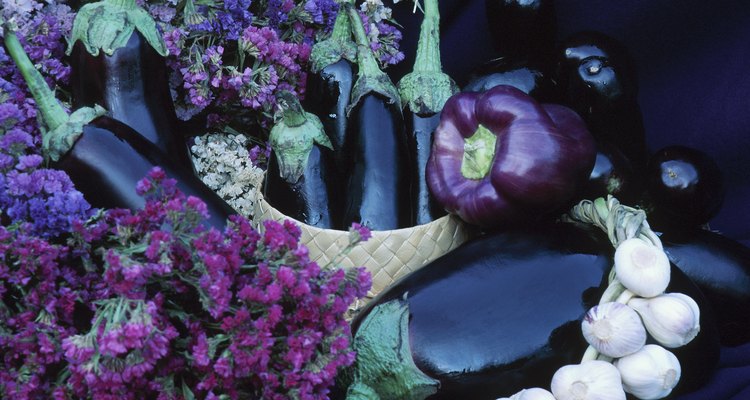
Hemera Technologies/Photos.com/Getty Images
Eggplant is very low in calories--there are only 14 calories in half a cup of boiled eggplant, according to Ohio State University. The vegetable is not loaded with nutrients because it is about 92 percent water. The 14-calorie serving has about half a gram of protein and 3 carbohydrate grams. However, eggplant is rife with fiber, potassium and calcium. Using eggplant can be a productive way to create healthier meals, depending on how you cook it.
Parmesan Substitutes
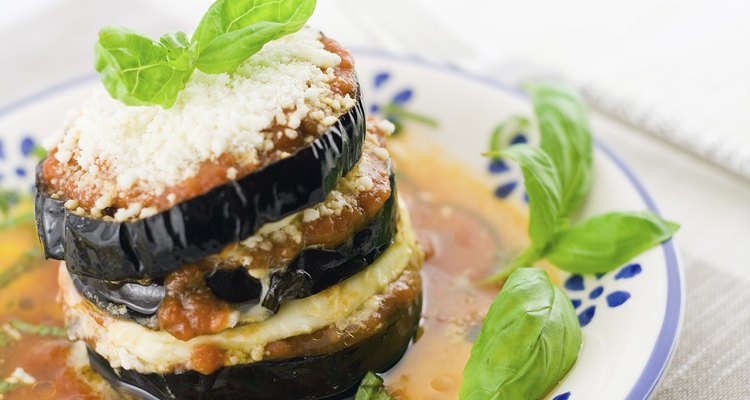
massimiliano gallo/iStock/Getty Images
Eggplant Parmesan is a popular dish for the purple vegetable, but the breading and heavy cheese can turn a low-cal meal into a caloric nightmare. Instead of breading the eggplant before making the casserole, just boil the vegetable, slice it, and cover with low-sugar marinara sauce and one layer of low-fat mozzarella cheese. If you cannot eat eggplant unbreaded, consider refraining from frying each piece before cooking the entire dish. Instead, coat each slice with spray cooking oil, and apply the breadcrumbs. Place the eggplant slices on a cooking sheet, broil them for 5 minutes on each side, then cover them with sauce and mozzarella cheese.
Grilling
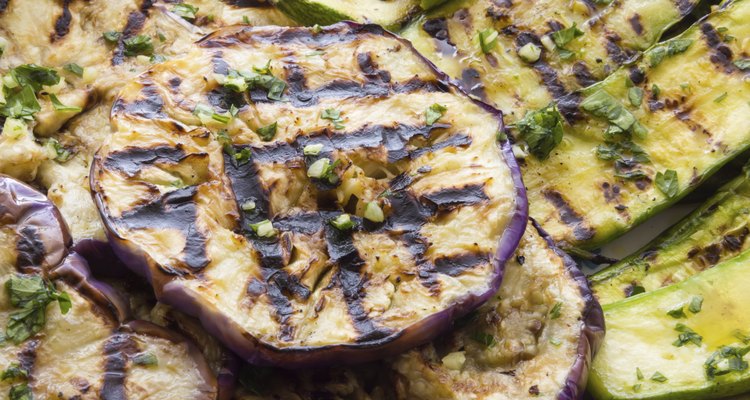
fpwing/iStock/Getty Images
Eggplant chunks can add flavor and variety to a grilled meal. They can be sliced, lightly sprayed with cooking oil and placed directly on the grill for a minute on each side. Grilled eggplant slices can be placed on top of the meat being served or wrapped in a low-fat tortilla with other grilled veggies. Eggplant also can be peeled, cut into cubes and added to a shish kabob.
Baking
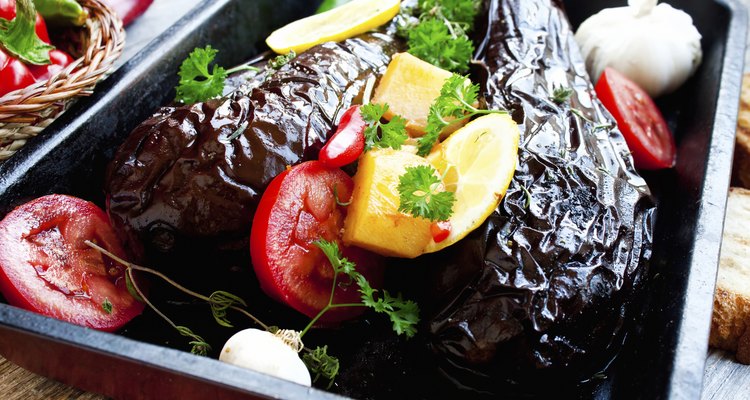
marrakeshh/iStock/Getty Images
Eggplants do well when placed whole in an oven at 400-degrees for 30 to 40 minutes. Nutritionist Leslie Beck says cutting open the baked eggplant and serving it with toast points is called "the poor man's caviar." Bake the vegetable in two halves for another healthy, low-fat meal. The eggplant should be washed and cut in half after cutting off the stem and ends. You can lightly brush the inside of the eggplant with olive oil and bake it plain, or scoop it out and mix with herbs or other vegetables and replace the mixture before baking. Healthy additions that enhance the flavor of eggplant include garlic, cilantro, hot peppers, basil and lemon juice.
Related Articles
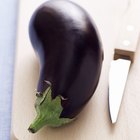
Good Eggplant Vs. Bad Eggplant
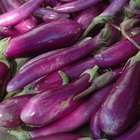
Brining Eggplants

Fiber in an Eggplant

How to Cook Papaya Pear Squash
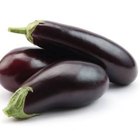
How to Clean Eggplant

How to Cook a Turban Squash
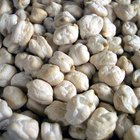
How to Bake Thin Sliced Turkey Cutlets

How to Reduce the Acidity in Eggplant
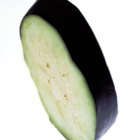
How to Dredge Eggplant

How to Bake a Whole Eggplant
How to Grill Chayote Squash

How to Freeze Fresh Asparagus
Can You Freeze Eggplant Parmesan After ...
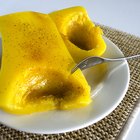
How to Cook Buttercup Squash
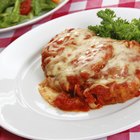
How to Cook Eggplant in a Toaster Oven

How to Cook Nopales for Fajitas

How to Parboil Artichokes

Bagel Bites Heating Instructions
How to Boil Chayote

Avocado Serving Size & Nutrition
References
Resources
Writer Bio
Linda Ray is an award-winning journalist with more than 20 years reporting experience. She's covered business for newspapers and magazines, including the "Greenville News," "Success Magazine" and "American City Business Journals." Ray holds a journalism degree and teaches writing, career development and an FDIC course called "Money Smart."
Photo Credits
Hemera Technologies/Photos.com/Getty Images